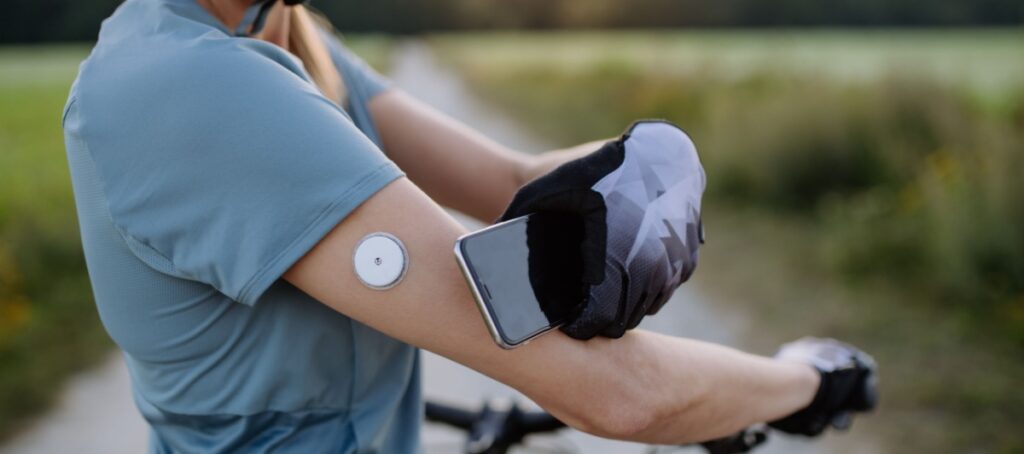Living with diabetes requires continuous attention, awareness, and management. Fortunately, advancements in medical technology have introduced solutions that make it easier to monitor and manage blood sugar levels. One of the most impactful tools in modern diabetes care is the Continuous Glucose Monitor (CGM). Whether you’re newly diagnosed or have been managing diabetes for years, understanding how CGMs work and how they can improve your daily life is essential.
What is a Continuous Glucose Monitor?
A Continuous Glucose Monitor (CGM) is a medical device that tracks glucose (sugar) levels in real-time throughout the day and night. Unlike traditional finger-prick blood sugar testing, CGMs provide ongoing insight into glucose trends, offering data every few minutes via a tiny sensor inserted under the skin, typically on the abdomen or arm.
This sensor reads glucose levels in interstitial fluid and sends the data to a receiver, smartphone, or insulin pump. Most systems also include alerts for high and low blood sugar levels, helping patients make informed decisions quickly.
Key Benefits of Using a CGM
Switching to or incorporating a CGM into your diabetes management plan comes with several advantages. One of the most significant benefits is real-time monitoring, which allows patients to view their glucose levels instantly without repeated finger pricks. CGMs can also provide early detection of glucose spikes and drops through customizable alerts. By analyzing the trends provided by CGM data, patients gain a deeper understanding of how their diet, activity, and medications affect their blood sugar. This often results in improved A1C levels and better overall diabetes control. Additionally, CGMs help reduce the risk of hypoglycemia, especially during sleep, giving patients and their families greater peace of mind.
How CGMs Work
Each CGM system consists of a sensor, transmitter, and a receiver or display device. The sensor, which is a small wire inserted just under the skin, continuously measures glucose in the interstitial fluid. Attached to this sensor is a transmitter, which sends the collected data to a display device—usually a smartphone app or a dedicated handheld monitor. Users can then view their current glucose levels, track trends over time, and receive alerts when levels are too high or too low. Most CGMs are worn for a period ranging from 7 to 14 days before requiring sensor replacement. Some systems also integrate with insulin pumps to deliver insulin automatically, further simplifying diabetes management.
Popular CGM Systems
There are several reputable CGM systems available, each offering unique features to meet different needs. Dexcom G6 and the newer G7 models provide real-time data sharing with caregivers and integrate easily with smartphones and insulin pumps. The FreeStyle Libre series, including Libre 2 and Libre 3, is known for its simplicity and allows users to scan the sensor for glucose readings using a smartphone or reader. Medtronic’s Guardian Connect system pairs with specific insulin pumps and offers predictive alerts, helping users stay ahead of potential highs and lows. Consulting with a healthcare provider can help determine the most suitable system based on lifestyle and medical requirements.
Who Can Benefit from a CGM?
Continuous Glucose Monitors are valuable tools for a wide range of people living with diabetes. While initially popular among those with Type 1 diabetes, CGMs are increasingly used by individuals with Type 2 diabetes—especially those using insulin or experiencing frequent glucose fluctuations. CGMs are particularly helpful for people who struggle with frequent highs or lows, those looking to minimize finger-stick testing, or anyone requiring tighter glucose control due to health conditions, pregnancy, or lifestyle changes. The insights provided by CGMs empower users to make real-time adjustments and maintain better long-term glucose control.
Insurance Coverage and Accessibility
Today, many private insurance providers as well as Medicare offer coverage for CGM devices to eligible patients. To qualify, patients generally need to have a documented diagnosis of diabetes and show medical necessity, such as frequent blood glucose testing or insulin use. At Wilton Medical Supply, we specialize in helping patients understand and maximize their insurance benefits. Our dedicated team handles much of the paperwork, coordinates with healthcare providers, and ensures that patients receive their equipment with minimal out-of-pocket expenses. We also offer convenient home delivery for added comfort and accessibility.
Tips for Getting Started with a CGM
Starting with a CGM begins with a conversation with your healthcare provider, who can help determine whether this technology is appropriate for your diabetes care. Once approved, choosing the right system will depend on your daily habits, technology preferences, and insurance coverage. Learning to interpret the data is key—understanding how meals, exercise, and stress affect glucose levels will help you make informed decisions. Setting alert thresholds that align with your routine can enhance your ability to stay on track without becoming overwhelmed. Regular and consistent use of the CGM will yield the most meaningful benefits, enabling better long-term glucose management.
The Bottom Line on CGMs
Continuous Glucose Monitoring is transforming diabetes care by giving patients the tools to respond to their body’s needs in real time. It reduces the burden of frequent testing, provides peace of mind, and contributes to better long-term health outcomes. Whether you’re looking to improve your blood sugar control or simply live more comfortably with diabetes, a CGM could be a life-changing solution.
For more information on CGM systems and assistance with insurance and delivery, reach out to the experts at Wilton Medical Supply. Our team is here to support your journey to better health.

